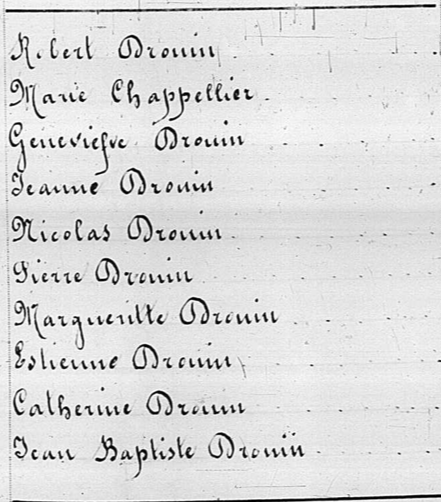The Storyline
"Real families.Real discoveries.Real stories."

The Widow Who Never Lost: Marie Chapelier's Legal Victory
Marie Chapelier arrived in New France as a penniless widow in 1649. She could read and write—a rare skill that would prove decisive 44 years later. When her stepdaughter challenged her property rights in 1693, Marie fought back through five levels of colonial courts. The final score: 9-0. She died undefeated three months after her final victory. This is the story of strategic survival, legal warfare, and one woman's refusal to be defeated.
Part of the Storyline Genealogy series: From marriage contracts to courtroom victories—one widow's signature tells a 48-year story of literacy, strategy, and undefeated determination.

The Aversion: A Family War Over a Fille du Roi's Estate
On February 28, 1697, Provost Judge Guillaume Roger wrote a word that changed everything: "aversion." He wasn't describing a mild disagreement—he was documenting hostility so severe that normal legal proceedings couldn't work.
Who were these people who hated each other so intensely? A 52-year-old widowed farmer named Pierre Guilbault and his three adult children: Marie (29), Joseph (25), and Étienne (22).
What were they fighting over? Their dead mother's estate.
Louise Senécal arrived in Quebec in 1667 as a Fille du Roi—a King's Daughter sponsored by Louis XIV. She married in eleven days, raised four children, and built a prosperous farm over 26 years. When she died in 1693, her husband tried to remarry immediately and refused to settle her estate.
Her children waited nearly four years. Then they struck.
This is the story of how three siblings used the 17th-century court system to honor their mother's memory—and how primary sources documented a family war that would end in death, division, and justice.
Part of the Storyline Genealogy series: Uncovering the extraordinary stories hidden in ordinary family histories, one ancestor at a time.

Crossing the Atlantic: How Louise Senécal Became a Fille du Roi
Before the family war that required judicial intervention, there was a ship. Louise Senécal ignored the warnings of 20 women who filed formal complaints about conditions aboard the St. Louis de Dieppe. She crossed the Atlantic anyway, survived 107 days at sea, and married a man who had failed twice before to secure a bride. Eleven days after stepping off the ship, she became Louise Guilbault of Charlesbourg.
Part of the Storyline Genealogy series: Uncovering the extraordinary stories hidden in ordinary family histories, one ancestor at a time.

The Hidden Years: Marriage, Crisis and the Same-Day Contract
Pierre Guilbault appeared before a notary on April 13, 1693, to sign a marriage contract with 20-year-old Jeanne Morin. It was the same day his wife Louise died. The shocking timing—documented in colonial records—reveals the tensions that had been building in a marriage that survived separation, reconciliation, and 26 years of frontier life, only to end in a family war over Louise's estate.
Part of the Storyline Genealogy series: Uncovering the extraordinary stories hidden in ordinary family histories, one ancestor at a time.
Finding Marie Josephte: How One Ojibwe Woman Emerged from Two Centuries of Silence
For generations, she existed only as "Sauvagesse"—the nameless Indigenous wife of a French-Canadian voyageur. Like thousands of Indigenous women erased from colonial records, Marie Josephte Abitakijikokwe seemed destined to remain forever unknown.
But in 2024, using FamilySearch's new Full Text Search feature and systematic research across five Quebec parishes, her full Ojibwe name emerged from a 1801 marriage record. Across 15 documents spanning nearly a century, Marie Josephte transformed from "unknown Indigenous woman" to one of the best-documented Indigenous ancestors in Quebec parish records.
This discovery proves your "nameless" ancestors may be findable—if you know where and how to look.
